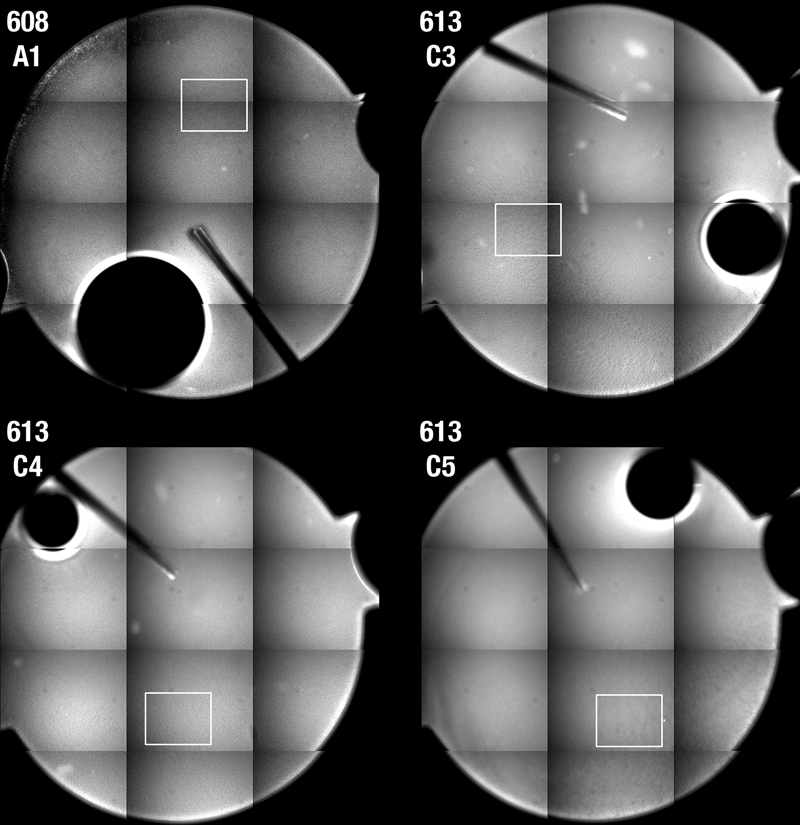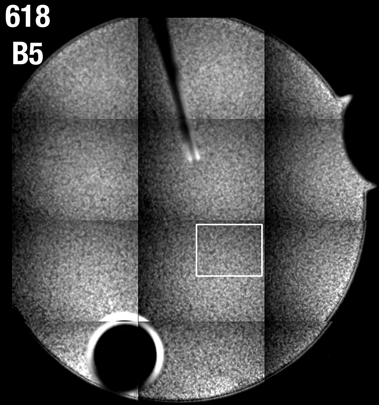ACE-M2 Run 4: comparing time evolution among wells with the same sample
The main purpose of Run 4 for ACE-M2 is to observe the time evolution of phase separating samples in platter 2105, which has five wells all with sample 21 plu_ACEM2_lg_ps, the phase-separating colloid-polymer mixture using the larger particles. We know from the comprehensive survey in Run 2 that these samples visibly phase separate, so the goal is to look at the different wells and see if they all behave the same—as they should, given that the sample is identical. There may be some minor variations due to slightly different bubble size and/or mixing by the crew, but overall we expect similar evolution and structure.
Strips 608 and 613: samples A1, C3, C4 and C5
As we are standardizing on procedures, we first image the entire well with a 10x composite tiling at a depth of 80 microns, which for samples A1, C3, C4 and C5 are pretty much the same:

The wells look mostly well-mixed, with a small amount of phase separation visible as the texture in the images develop. But the feature size of the separation is similar in all wells, so this is suggests we are being consistent in loading, mixing and imaging.
Strip 618: sample B5
By contrast, sample B5 is completely different. There is some structure forming, which is at a much larger length scale: uniformly far more coarse, throughout the sample well.

This differs significantly from the other four wells, and there is no obvious scientific reason that we should expect this. Hopefully we will be able to resolve this mystery with more data as it is collected.